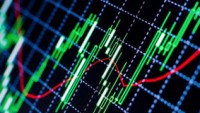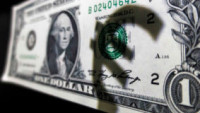 Yesterday’s decline in Asian and European markets came about as a direct result of concerns over a big jump in infection rates, not only in a number of US states, levels that are still rising, but also in China and Germany.
Yesterday’s decline in Asian and European markets came about as a direct result of concerns over a big jump in infection rates, not only in a number of US states, levels that are still rising, but also in China and Germany.
This sharp rise in cases has raised concerns that any second wave could well derail the prospects for a swift recovery, as economies across the rest of Asia and Europe continue to try and re-open, across a range of businesses.
As a result of these heightened concerns, gold prices have continued to maintain a bid, with the safe haven asset closing in on its previous highs this year and its highest level since 2011.
US markets initially followed the lead of markets in Europe, however it didn’t take long for optimism, as well as buyers to resurface, with a rebound in Apple shares helping to propel a new record high in the Nasdaq, but also a broader recovery in US prices as well.
The move higher in Apple’s share price was helped by the unveiling of a number of new features at the WorldWide Developers Conference (WWDC) including a new operating system iOS14, as well as a new chipset, using Apple technology instead of Intel.
This schizophrenia around the direction of share prices is being driven by a tug of war between the bears on the one hand, who are suspicious of the current rebound, against an economic backdrop that is nothing short of dire, and the bulls who believe that central bank and fiscal stimulus can fix all manner of evils.
For now, both sides are battling each other towards stalemate with the bulls currently holding the upper hand, in the absence of clear evidence that a second wave might prompt another new lockdown.
Markets in Asia have had a turbulent session after President Trumps trade advisor Peter Navarro said in an interview with Fox News that the Chinese phase one trade deal was over, sending stocks sharply lower. This decline was quickly reversed after President Trump tweeted soon after that the deal was still fully intact.
On the data front the picture continues to look a little mixed, albeit with some notable improvements as economies continue to loosen lockdown restrictions. This morning’s latest flash PMI numbers from Australia and Japan speak to a continued improvement in economic activity, with the services activity in Australia rebounding strongly to 53.2 in June from 26.9 in May. In Japan the rebound was more muted with a recovery to 42.3 in services from 26.5. Activity in the manufacturing sector of both economies was much more subdued, speaking to inventory backlogs of existing products constraining an increase in activity in this sector. For example unsold cars and other manufactured products and inventory will need to be worked off, before manufacturing can restart in earnest.
Today’s latest June flash manufacturing and services PMIs for France, Germany and the UK, are another set of leading indicators that should see further gains from the record lows seen in April, and the subsequent improvements seen in May.
Optimism over a rebound in economic activity across Europe gained traction in May when there was a decent rebound from the record lows seen in April when economic activity collapsed sharply, in the wake of the lockdown measures.
Record lows of 10.2 and 16.2 in services activity in April for France and Germany respectively, provided a decent base for a recovery in May to 29.4 and 31.4.
The release this morning of the latest June flash numbers is expected to improve upon that; with expectations of improvements into the mid 40’s, of 45.5 and 41.6.
This might be a touch on the optimistic side given that a lot of businesses have struggled to reopen, most notably retail, as well as travel and leisure, while in the UK we could well see economic activity lag behind, due to non-essential shops only reopening a few days ago, on the 15th June.
As a result, UK services activity may only improve to 40 from 29, due to being slightly behind the rest.
Manufacturing has been a lot more resilient albeit with readings in the mid to high 30’s, and here we could also see a move into the mid 40’s for all three, France expected to come in at 46, Germany 42.5 and the UK, 45.
Some more decent numbers here will help go some way to assuaging concerns over a second wave, and while it is expected that there will be pockets where we see a spike in infections, like what is happening in Germany now, any prolonged increase is likely to allow the bears back in.
EURUSD – rebounded from the 1.1160/70 area yesterday, the euro ran out of steam at the 1.1270 area. A move through here opens up a return to the previous peaks, just above the 1.1400 area. A break below the 1.1150 level could well open up a move towards the 1.1020 area.
GBPUSD – a bullish reversal, has seen the pound recover back through the 1.2430 area, and could well see a move back to the highs last week at 1.2690. We need to hold above the 1.2330 level or run the risk of a move back towards the May lows at 1.2075.
EURGBP – found some short-term resistance at the 0.9070 area before slipping back. While above the 0.9000 level the bias remains for a move back to the 0.9240 area, if we can hold above 0.9020. Trend line support from the lows this year comes in at the 0.8925 area.
USDJPY – currently has resistance at the 50-day MA at 107.70/80 area, with support coming in at the 106.40 area where we have cloud support. A break below 106.00 and the May lows opens up the prospect of a move back to the 105.20 area.
_________________
Read Other Forex Analysis On Our Site













